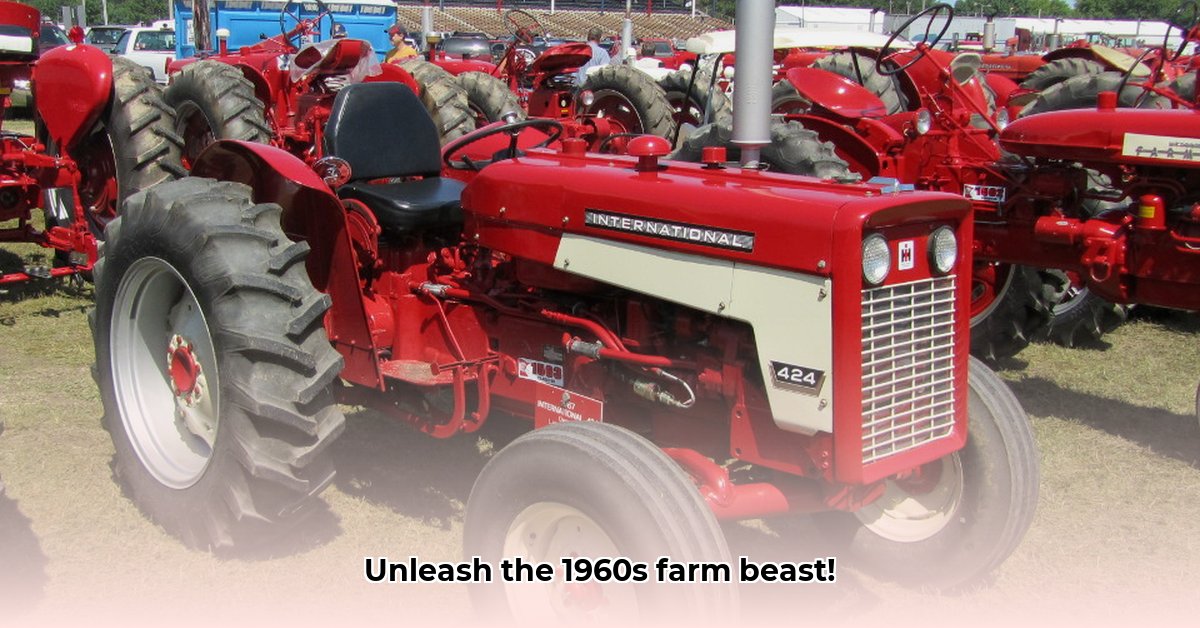
The International Harvester 424, a stalwart of 1960s agriculture, represents a bygone era of robust, dependable farm machinery. This article delves into the technical specifications and historical context of this iconic tractor, providing insights for enthusiasts, historians, and anyone curious about its enduring legacy. For more on European tractor brands, see this helpful resource.
Engine Specifications: Powering the Fields
The International 424 offered farmers a choice between gasoline and diesel powerplants, each with distinct characteristics. Both engines delivered approximately 36-37 horsepower at the PTO (power take-off) shaft, a significant output for its time. However, the methods of achieving this power differed considerably.
| Engine Type | Model | Estimated Displacement (cubic inches) | Approximate Horsepower (PTO) | Approximate Torque (lb-ft) | Fuel Consumption (est. gph) |
|---|---|---|---|---|---|
| Gasoline | C-146 | 260-280 | 36-37 | 120-140 | 5-7 |
| Diesel | BD-154 | 192-200 | 36-37 | 150-170 | 4-6 |
Note: Displacement and fuel consumption figures are estimates based on available data and vary slightly across sources. Torque figures are also estimates.
Was the extra displacement of the gasoline engine worth the potentially higher fuel consumption? This was a key consideration for farmers at the time.
Transmission and Drivetrain: Smooth Operation
The 424 featured an 8-forward, 2-reverse sliding gear transmission, a common setup for tractors of this era. This was coupled with a reliable mechanical dry-disc clutch. The availability of power steering significantly eased operator fatigue during extended use. The two-wheel drive system was typical for the agricultural equipment of that period, prioritizing simplicity and dependability.
Key Features and Attachments: Expanding Versatility
Beyond its core powertrain, the 424 offered several features that boosted its versatility and usefulness. A 540 RPM live PTO facilitated the efficient operation of powered implements like hay balers and mowers. Optional front-end loaders (models 1501 and 2001) further expanded its capabilities, enabling material handling and light construction work. These features proved invaluable on farms requiring diverse tasks.
Historical Context: A Reflection of its Time
The International Harvester 424's design reflects the farming practices and technology of the mid-1960s. Its open operator station, lacking an enclosed cab, highlights the evolution of safety and comfort standards in agricultural machinery. This open design, however, contributed to the tractor's rugged simplicity and ease of maintenance.
Comparison with Competitors: A Solid Contender
Direct comparisons with contemporary tractors from other manufacturers are challenging due to limited readily available data. Nevertheless, the 424 offered a competitive balance of performance and durability within its price range. While not the most powerful option, its dependable performance made it suitable for a broad range of farm operations.
Conclusion: An Enduring Legacy
The International Harvester 424, produced from 1964 to 1967, represents a significant chapter in the history of agricultural machinery. Its rugged simplicity and robust reliability cemented its place in the hearts of farmers and collectors alike. Its legacy continues to resonate with those who appreciate its straightforward design and contribution to farming in the mid-20th century. The 424's story is a testament to its sturdy construction and effective performance in a time before modern advancements.